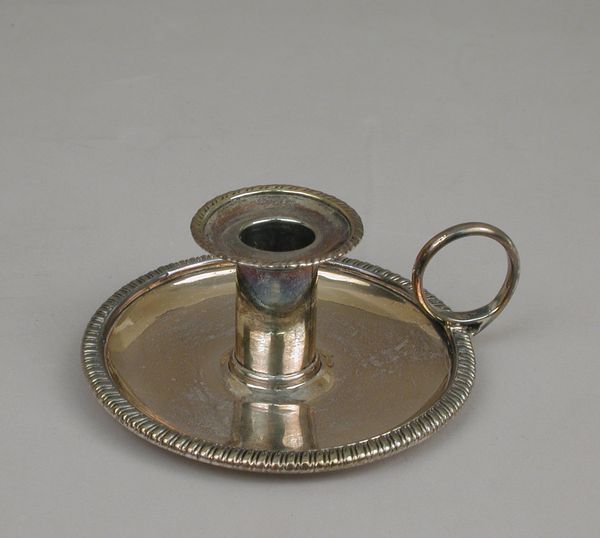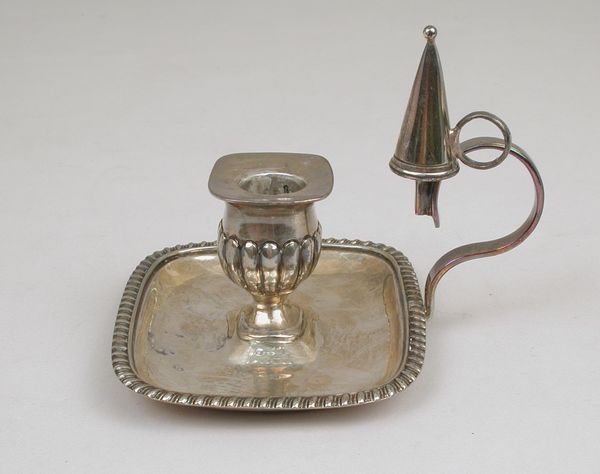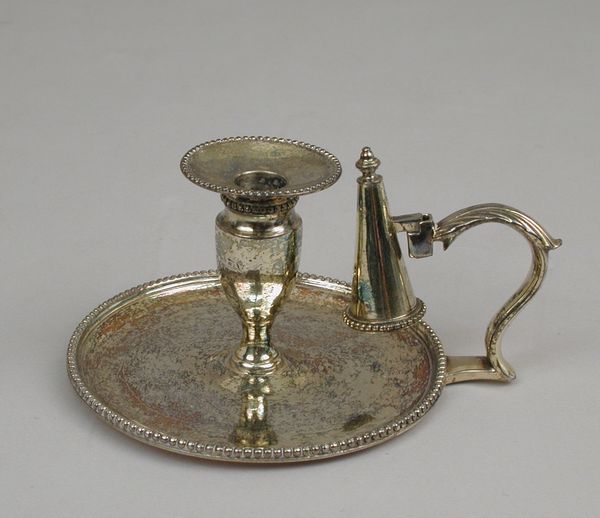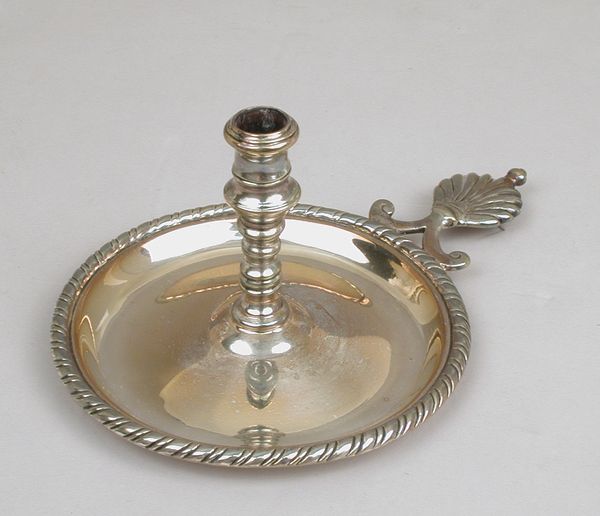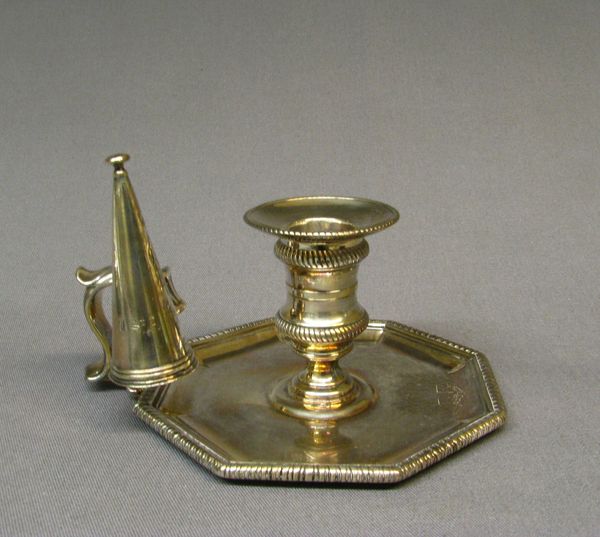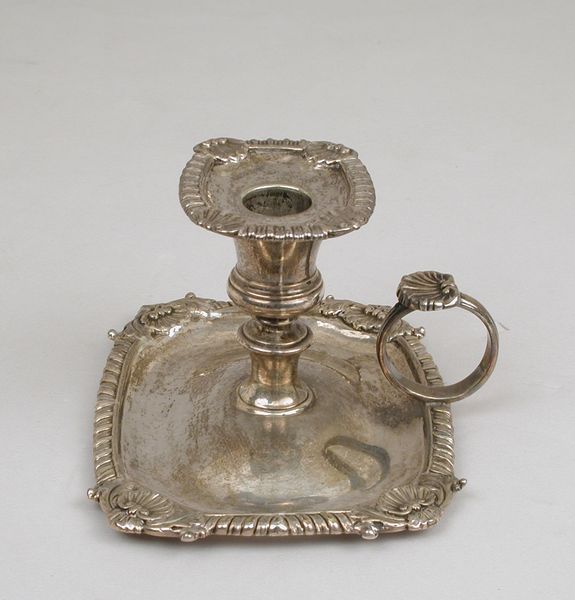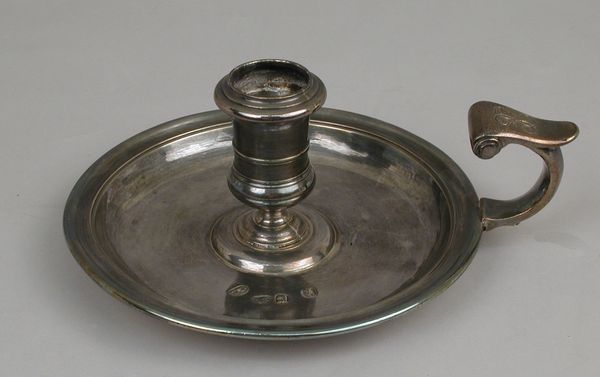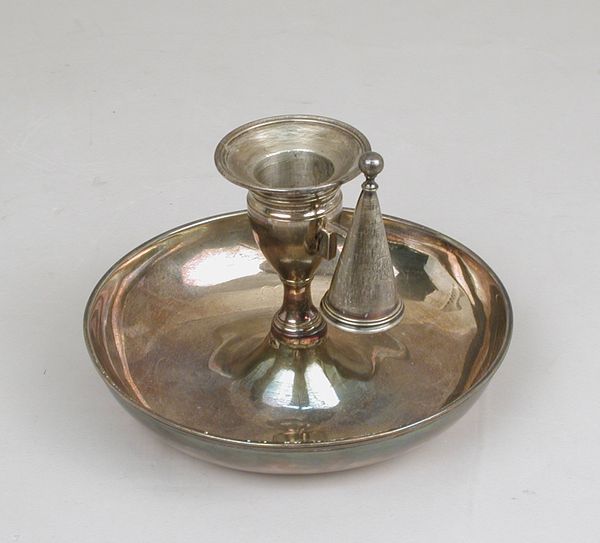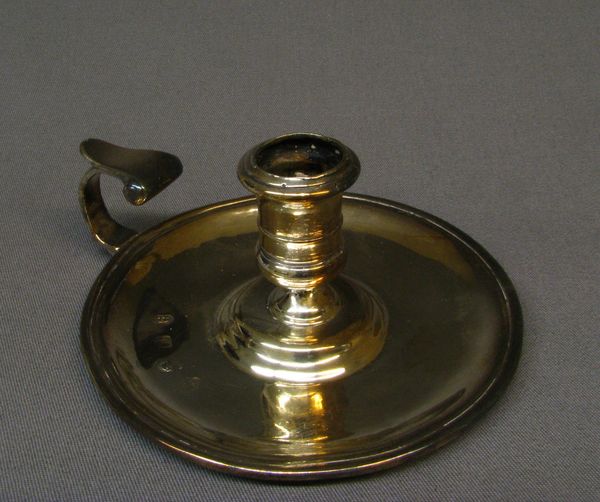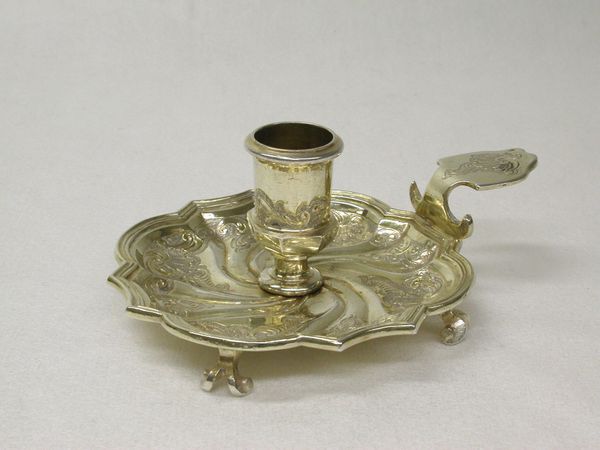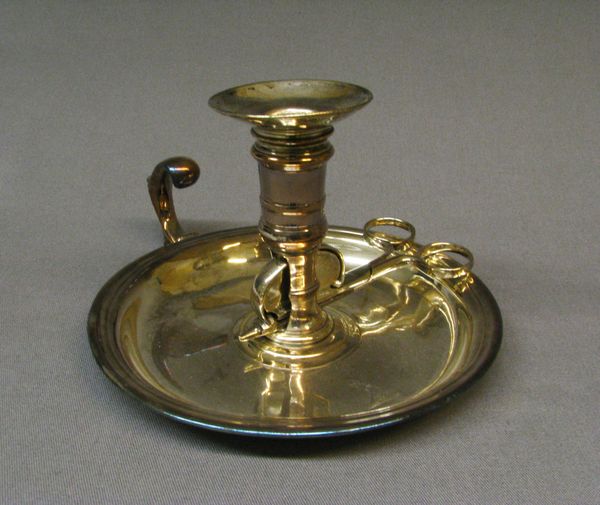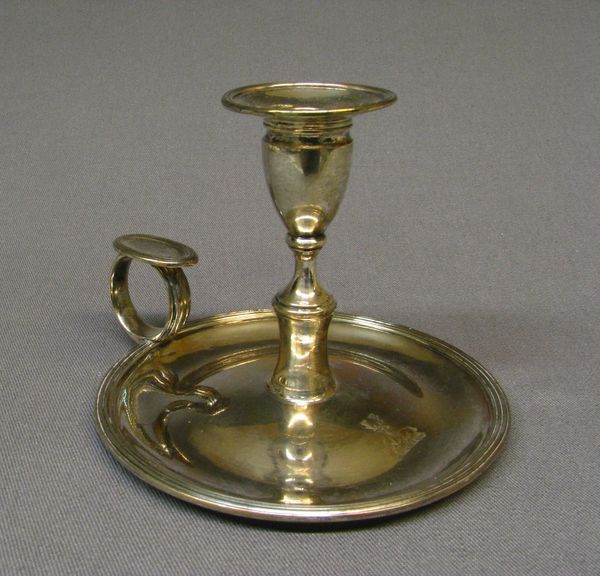
silver, sculpture
#
silver
#
sculpture
#
sculpture
#
decorative-art
Dimensions: Overall: 2 5/8 × 4 3/8 in. (6.7 × 11.1 cm)
Copyright: Public Domain
Curator: Just seeing it makes me feel like curling up with a good book on a stormy night. It's comforting somehow. Editor: We're looking at a silver taperstick, dating from 1776 or '77. It's attributed to Edward Taylor, a silversmith. Think of it—it was made right as the American Revolution was getting into full swing. Curator: Oh, to have been a fly on the wall...or maybe flickering light from this little candlestick. The handle, shaped like a delicate leaf—there’s a sense of gentle ornamentation, like the artisan knew life needed pretty things to balance out the turmoil. Editor: Well, tapersticks, while decorative, were fundamentally practical. People used them to light sealing wax when writing letters, which puts its creation in the midst of correspondence that was undoubtedly discussing revolutionary ideas! It makes one consider the politics embedded within this tool. Curator: That gives me pause. When I look at it, I want to dream of candlelight, of whispering secrets... but I guess, being honest, it could have witnessed so much more. Letters of revolution. Decisions of war. Incredible! Editor: Absolutely! And this one being made of silver meant its owner possessed a certain status, so this wasn't lighting just anyone's correspondence. It speaks volumes about class, commerce, and the role of luxury items during transformative periods. The taperstick becomes more than just functional. It becomes a political object, embedded within networks of power. Curator: That is an intense amount of meaning imbued in what appears to be simple craftsmanship. But now, thinking about the silver itself... the craftsmanship, holding those stories... that feels incredibly resonant. It goes beyond my initial quiet night; this taperstick held, or might have held, the spark of a revolution. Editor: Right! This really urges us to rethink what we consider everyday objects and how they were embedded within complex cultural and political contexts. Next time you see an ordinary item, ask yourself—what was really going on when this was made and who did it serve? Curator: That’s powerful! A tiny piece of art to illuminate big history, but, more so, big truths, right? Editor: Precisely. A tiny time machine.
Comments
No comments
Be the first to comment and join the conversation on the ultimate creative platform.
